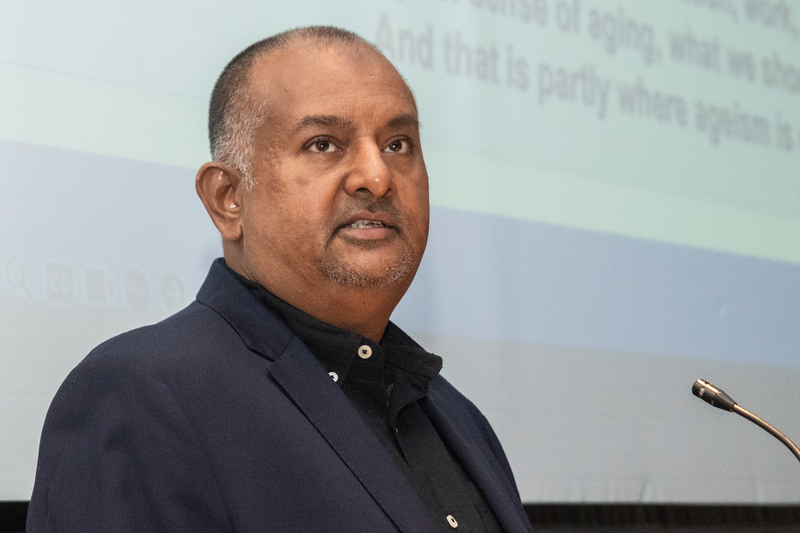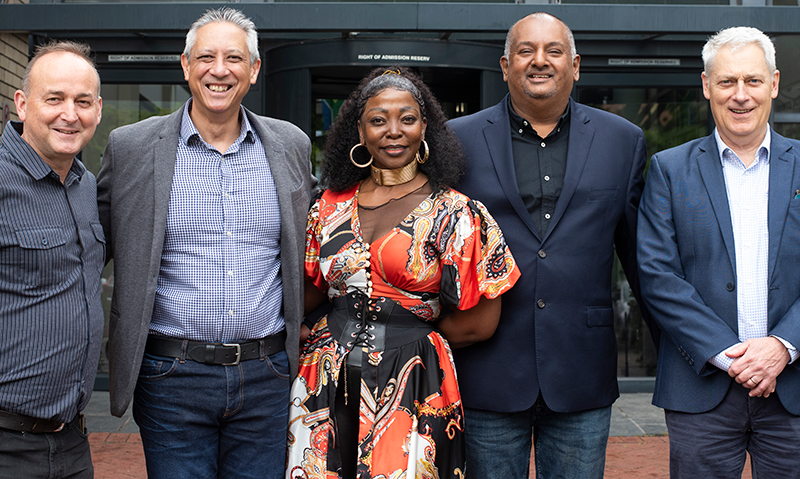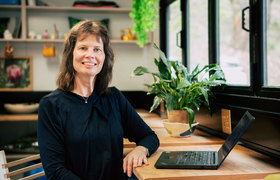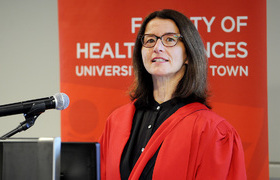SA’s over 55 are redefining aging and reshaping consumer behaviour
08 November 2023 | Story Kamva Somdyala. Photos Brenton Geach. Read time 4 min.
The University of Cape Town’s (UCT) Liberty Institute of Strategic Marketing has released a new report on the over 55-year-old market in South Africa and how they relate to their shifting outlooks.
The report finds, among other things, that several horizon shifts take place. The chief marketing officer of PepsiCo sub-Saharan Africa, Martin Neethling, explained that the attraction to this market for this research is because it is a segment that is undergoing rapid change at a critical decision-making stage of life.
Retirement is explored at length in the report. This 18-month study was conducted through a survey of 1 900 people, with over 300 interviews conducted, using quantitative and qualitative methodologies.
The shifting horizons in question include extended living, which Neethling said had to do with why people live longer. “There has been improved healthcare and nutrition. People also undergo lifestyle changes and have increased awareness of health risks and the importance of healthy living.”
Another factor is generational drift, which has implications for this age bracket as those with children still find themselves supporting them. “There is an emerging adulthood which means young people are living at home longer, studying longer and depend on their family. They also marry later,” said Neethling.
Seventy-one percent of over 50s said they had dependent children; 64% of 55- to 60-year-olds have children living at home; and 30% of over 75s said they have children living at home, the consequences of which is late retirement.
Fastest growing cohort
“The year-by-year proportion of those over 55 is growing, and according to the statistician-general [of South Africa], it’s the fastest growing cohort in the country,” said Graham Easton, the divisional executive for research and insights at Liberty Holdings.

“The net effect of a growing population is that life expectancy goes up. The South African population of over 55 by gender shows that all race groups are getting older,” said Easton in his presentation.
In addition, the current population of over 55s is 8 million and, according to the South African Revenue Service’s (SARS) tax statistics from 2021, make up R600 billion in aggregate taxable personal income.
“Older South Africans live under severe financial constraints; 3.7 million people receive the state old-age grant of R1 980 and 50% of older persons live in households without any employed household members,” Easton added.
The Grey Zone
Kroshelan Chetty, the customer experience lead at Liberty Holdings said that there is increased life expectancy nowadays, careers have become nonlinear and there is continuous learning, which means that older South Africans still want to be active.
“Many people have tried to rename it, but you will still think about it in the same way. Good health and resources mean many will enjoy an extended period of ‘active ageing’. Our research shows that older South Africans are still active consumers and producers. Grouping everyone over 65 into a homogenous category called ‘retirement’ is increasingly tone deaf to the realities of modern aging. What we found in the research is that people’s lifestyles will be dependent on two primary variables: financial and physical well-being,” said Chetty.
“Another phenomenon that came through strongly in the research called “The Grey Zone”, where people are still working but transitioning into what was traditionally known as the “early retirement” phase over time.
“The Grey Zone is often about one’s approach to career, earning, productivity and adding value. It is characterised by a resetting of priorities, new identity formation, and increased attention on one’s own future.”
Marketing to over-55s
Chief of strategy at Ogilvy South Africa, Neo Makhele, spoke about how the new generation of forerunners are taking more control and what their relationship with marketing material looks like.
“They are no longer willing to be passive recipients of ‘retirement thinking’ and they don’t want to get old like their parents did,” Makhele noted.
“This generation has a lot of life in them, so we must think about how we communicate with them as they grapple with many transitions. The 55+ demographic is not a homogenous group and successful targeting will likely need to consider variables like life stage, lifestyle and interests, family responsibilities, financial wellness and technology competency.”
“Change will continue as further increases in life expectancy and health care is anticipated and more opportunities for side businesses emerge.”
The research shows that 55% of middle-class over-55s said that brands are no longer interested in them. The growth of the black middle class is also noteworthy, as the country prepares to usher in its first major wave of retirees in this segment over the next 20 years. This segment will set the precedent for what black retirement looks like, as they become the first generation to do so with resources, which historically has not been the case.
“The old-life-stage model’s days are numbered, and we will continue to see life breathed into our understanding of age. Change will continue as further increases in life expectancy and healthcare are anticipated and more opportunities for side businesses emerge as work is redefined,” Makhele concluded.
 This work is licensed under a Creative Commons Attribution-NoDerivatives 4.0 International License.
This work is licensed under a Creative Commons Attribution-NoDerivatives 4.0 International License.
Please view the republishing articles page for more information.










